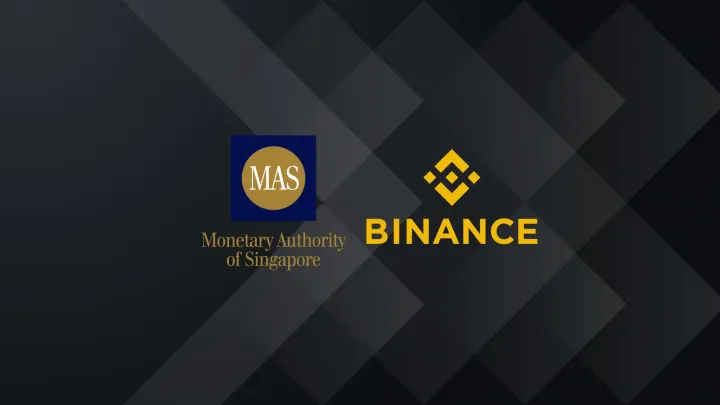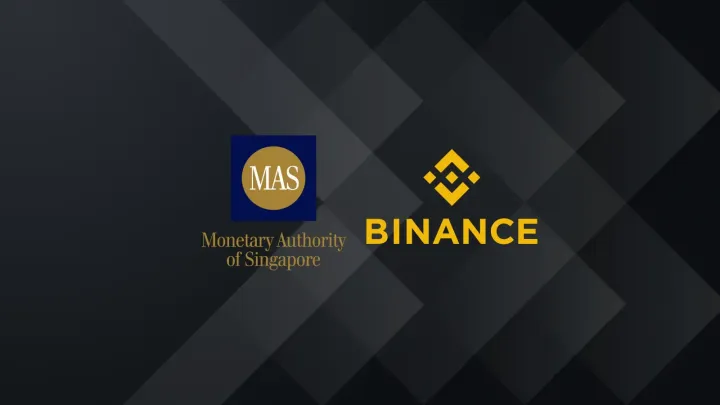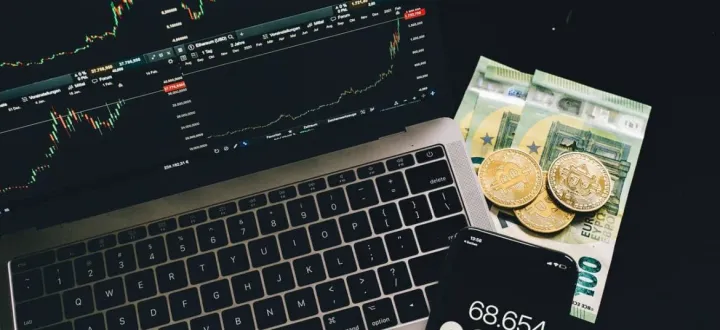How To Withdraw From Binance to Safepal
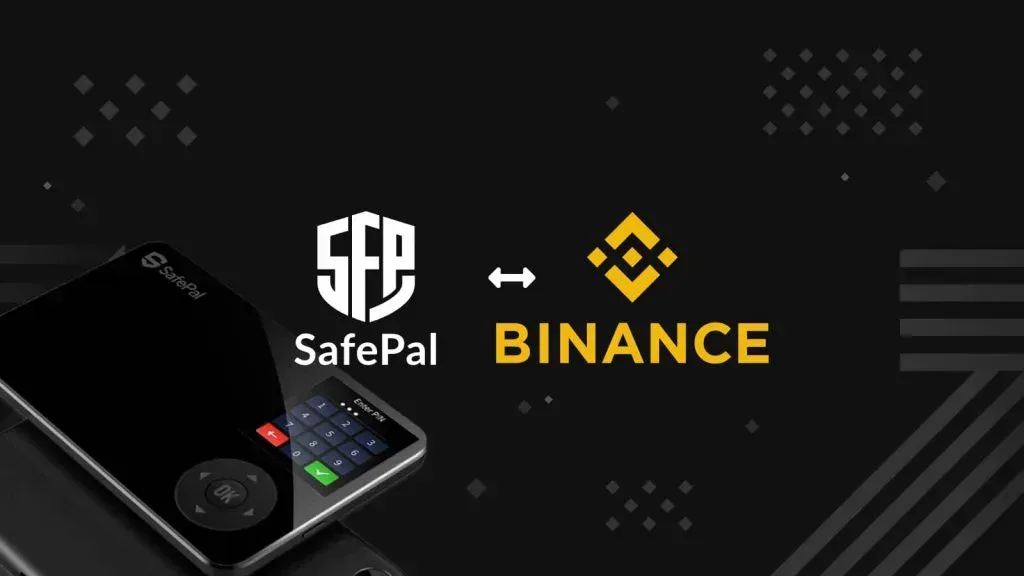
SafePal Wallet is by far the easiest hardware wallet to use for transferring crypto assets. It isn’t all that complicated at all if you have a little bit of guidance on what to look out for before making your first transaction.
To summarize the transaction process, it’s only a matter of copying and pasting the right wallet address that reflects the correct network from the SafePal App onto Binance. The network that you choose to transfer on has to be the same as the network your cryptocurrency supports. It’s the most important factor that determines if the transaction will be successful or not.
For example:
ERC-20 token can only use ERC-20 network.
BEP20 token can only use BEP20 network.
BEP2 token can only use BEP2 network.
In this article, we are going to guide you through how you can transfer your cryptocurrency assets to SafePal wallet from Binance in detail. You can use the table of content to go straight into the topic you’re most interested in.
What Is SafePal Wallet?

Among all the other different types of wallets out there, storing your cryptocurrencies in a hardware wallet is indeed the best choice to safeguard your crypto asset.
SafePal Wallet is one of the highly trusted hardware wallets in the market used by over 2,000,000+ people from more than 146 countries. It is considered one of the safest and most convenient choices of crypto cold storage hardware wallet to use across the continents.
SafePal Wallet is designed by a team of incredibly talented individuals with diverse areas of expertise in hardware, software, UI design, and cybersecurity. In fact, the SafePal wallet is the first hardware wallet to be endorsed by Binance, the largest cryptocurrency exchange in the world.
It’s a popular alternative crypto cold storage hardware wallet to Ledger Wallet because of its security features to manage the crypto assets and ease of accessibility to another crypto-related platform directly from their SafePal mobile app.
How does SafePal S1 Wallet work?
SafePal S1 Wallet is a hardware wallet that allows users to store, secure, and manage their cryptocurrency assets offline.
Offline. This means that SafePal S1 Wallet will not be able to access the internet or automatically update the crypto balance.
This air-gapped signing mechanism offers SafePal S1 Wallet more advantages in its security feature as compared to other hardware wallets in the market.
On top of that it has advanced security features with hack-proof EAL5+ secure element and two-factor authentication making SafePal Wallet is the preferred hardware wallet by many to store their cryptocurrencies.
What is Binance?
According to coingecko, Binance is the world's largest cryptocurrency exchange by trading volume. At the point of writing, its trading volume is almost 5 times more than the #2 cryptocurrency exchange on the leaderboard.
Binance allows users to buy and sell cryptocurrencies such as Bitcoin, Ethereum, Cardano, Litcoin, Solana, Avalanche, and hundreds of other altcoins.
By far, Binance has the most complete products and features on its exchange. Most cryptocurrency exchange only provides basic features like spot trading services like staking. On the other hand, Binance is considered a powerhouse because it includes over 10 crypto-related product offerings that you can enjoy:
- Spot Trading
- Derivative Trading
- DEX Trading
- Margin Trading
- Peer-To-Peer Trading (P2P)
- Launch Pool
- Liquid Swap
- NFT Marketplace
- Staking
- Investment Services
- Options/ Grid Trading
- LaunchPad
- Crypto Loan
Binance recently has expanded its products to allow payment services from users to store merchants called Binance Pay. It’s only a matter of time before the rest of the world is going to shop with crypto or send crypto to friends and family.
You should definitely explore Binance.
If you’ve yet to create your Binance account, you can sign up with this link and receive 10% commission bonus on trading fees for both spot and futures trading.

How To Use SafePal Wallet
SafePal Wallet has 2 different versions:
- SafePal Hardware Wallet (Paid)
- SafePal Software Wallet (Free)
Fundamentally, both SafePal hardware and software wallets serve the same purpose of storing and managing cryptocurrencies.
The only difference between the two wallets is that SafePal Hardware Wallet provides a higher level of security because of the private keys that are assigned to the wallet. This meant that users will not be at a disadvantage of losing crypto funds due to potential cyber-attacks or to the cessation of business that causes the software wallet to be taken down from the market.
Set Up Your SafePal Wallet
Move on to the next step if you’ve already managed to set up your Hardware Wallet on the SafePal App.
If you’re using the SafePal Hardware Wallet, make sure that you have your SafePal app installed on your mobile phone and link your Hardware Wallet on it. We find that it is easier to use the SafePal app to navigate and complete the deposit/withdrawal transaction.
How To Withdraw From Binance To Safepal
To make a deposit or a withdrawal, you’ll need to understand how to choose the correct Network for the cryptocurrency that the network of the platform you are transferring your funds to.
Depending on your cryptocurrency, you’ll find some of these networks familiar:
- BEP2 refers to the Binance Chain.
- BEP20 refers to the Binance Smart Chain (BSC).
- ERC20 refers to the Ethereum network.
- TRC20 refers to the TRON network.
- BTC refers to the Bitcoin network
Choosing the right network is extremely important. If you’ve selected the wrong network, you will lose your funds. You won’t be able to withdraw from Binance as your funds will be considered lost.
Check Supported Network In Binance
First, you’ll have to Open your Binance and tap Wallets – Fiat and Spot
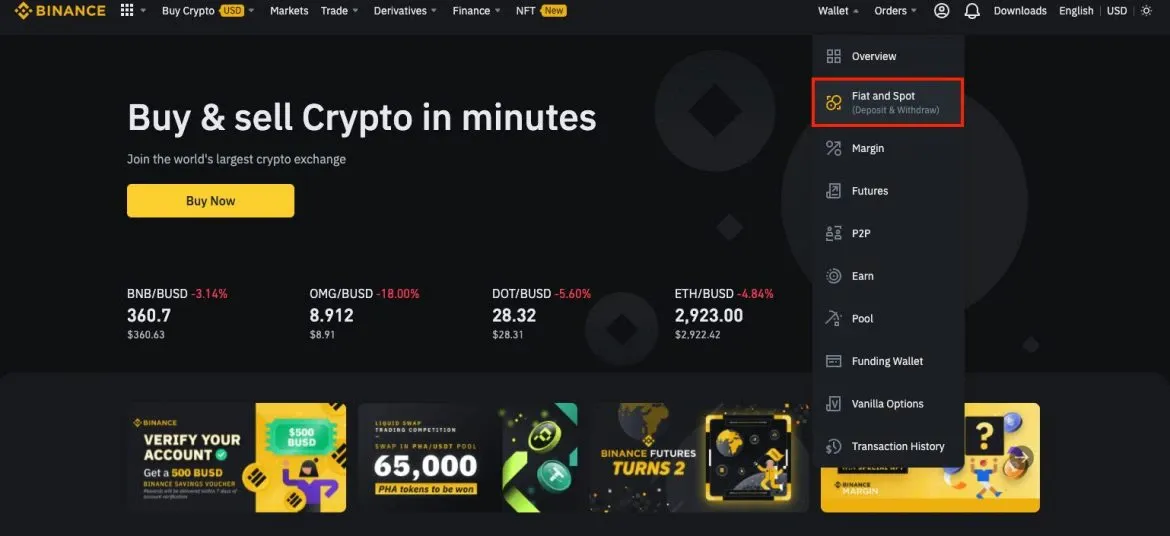
Find the cryptocurrency that you want to withdraw and click on withdraw.
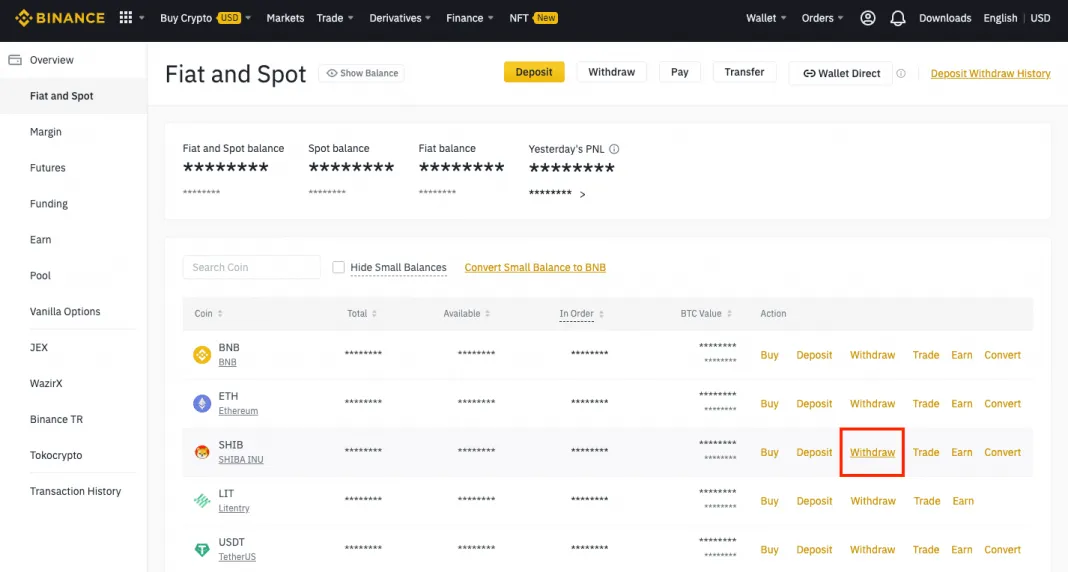
You should be able to see the Withdrawal page:
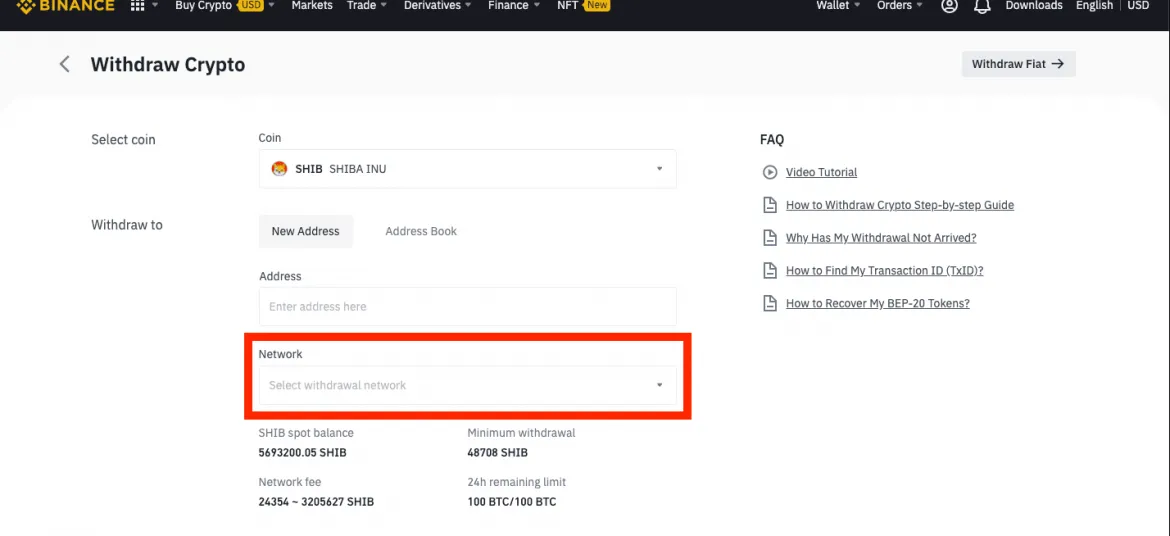
Click on the Network selections and you’ll be able to see all the network options available. From here, depending on which network you’ll prefer to use (BEP2, BEP20 or ERC20), there will be a one-time chargeable network fee for the transfer to complete.
The different network has different cost of gas fees. From the image below, you can tell that Ethereum Network (ERC20) has the highest gas fee.
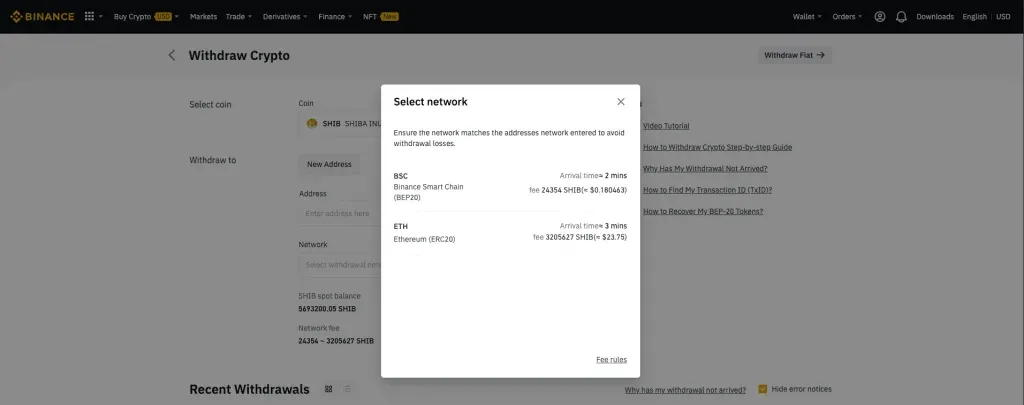
If you’re looking to save on gas fees, BEP20 or BEP2 will be a better choice.
We will be using BEP20 network to withdraw from Binance for this Demo.
Add Cryptocurrency To Wallet
Now that you have identified which network you can use to withdraw from Binance, head on over to your SafePal App.
You’ll need to add the cryptocurrency with the same network that you have chosen on Binance. Make sure you have selected the correct coin with the right network.
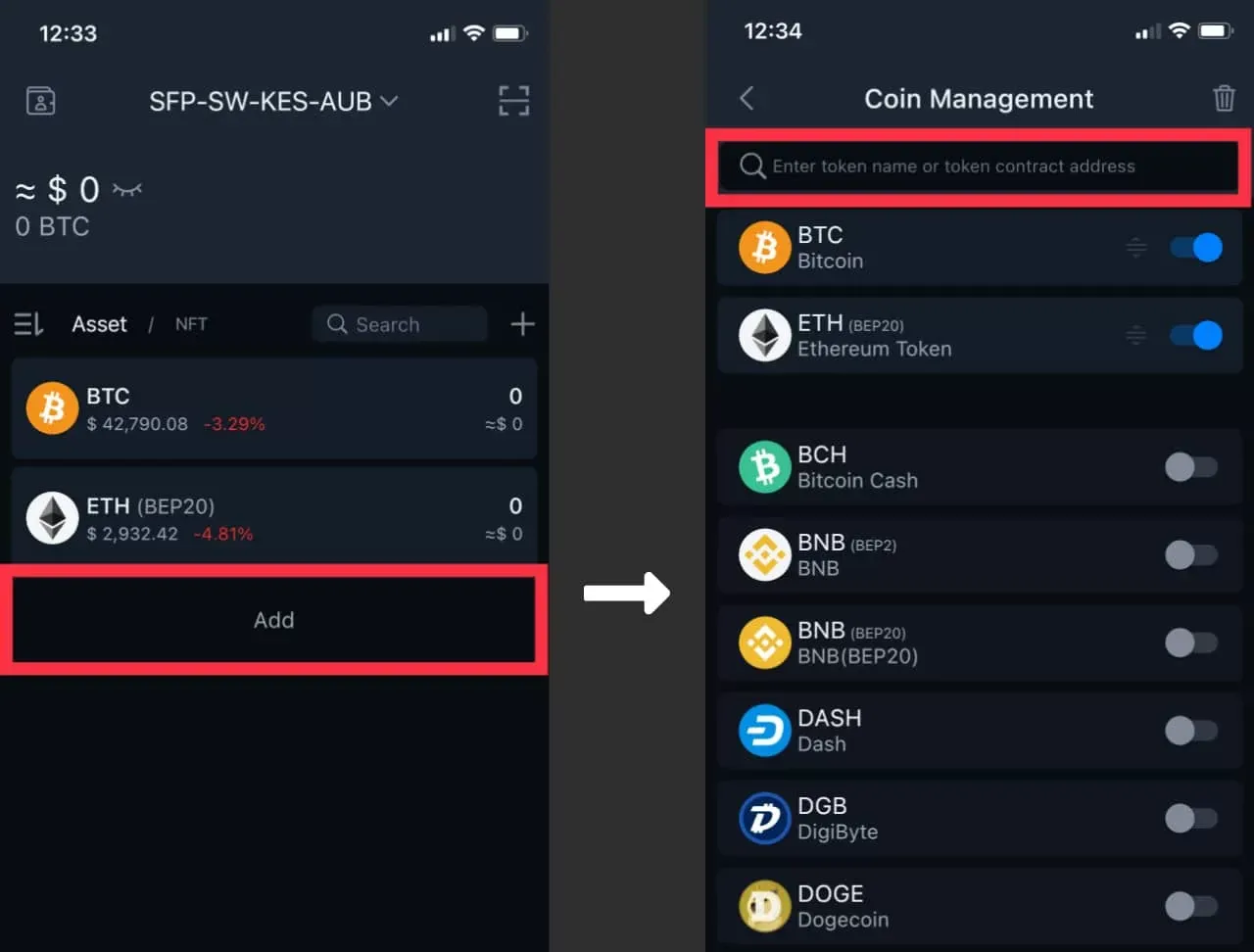
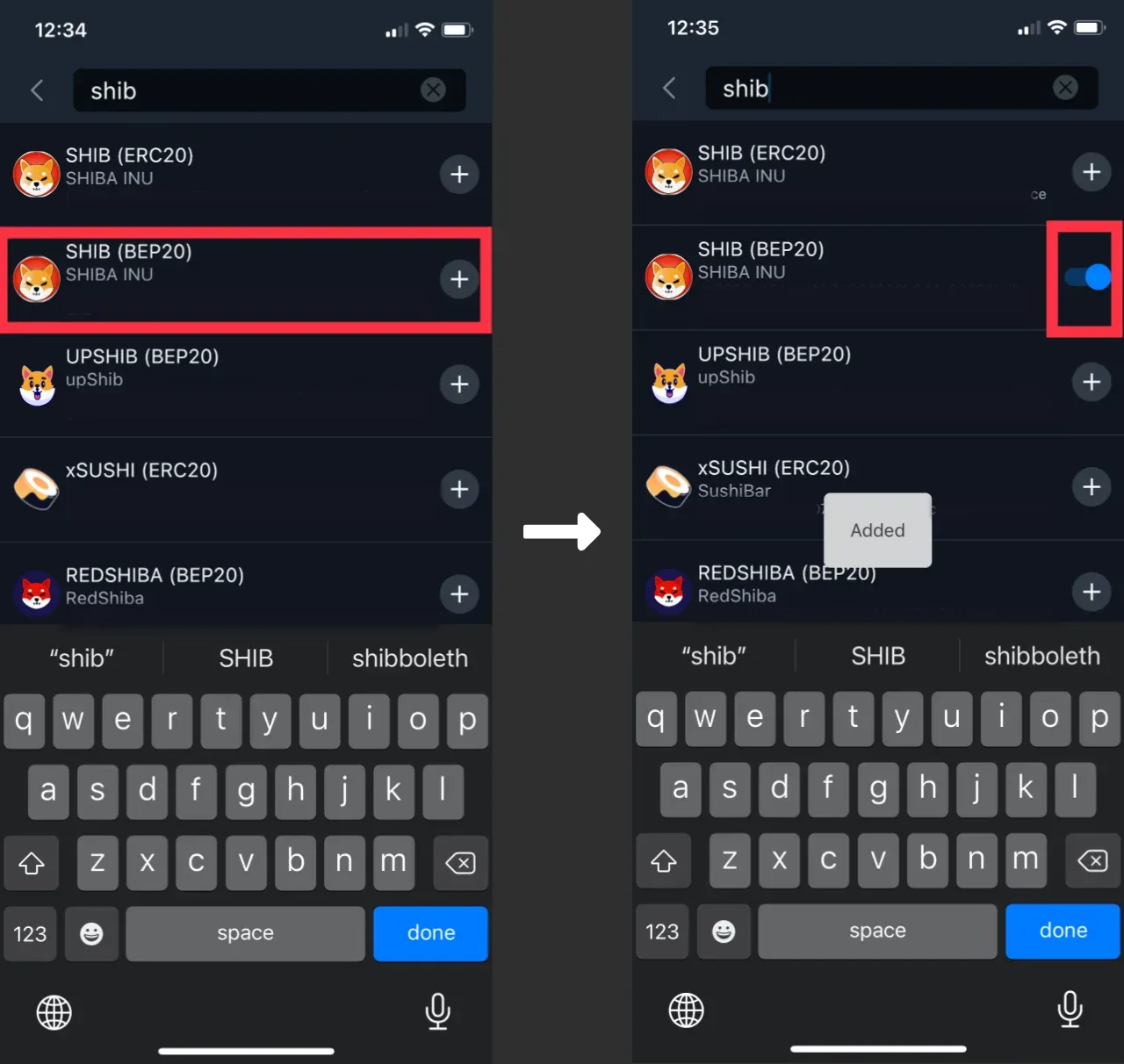
Copy Address Of Selected Cryptocurrency
Head back to the main menu and retrieve the address for SHIB (BEP20) and copy the address.
If you’ve decided to use ERC20 network on Binance, you also MUST choose the crypto with ERC20 network accordingly.
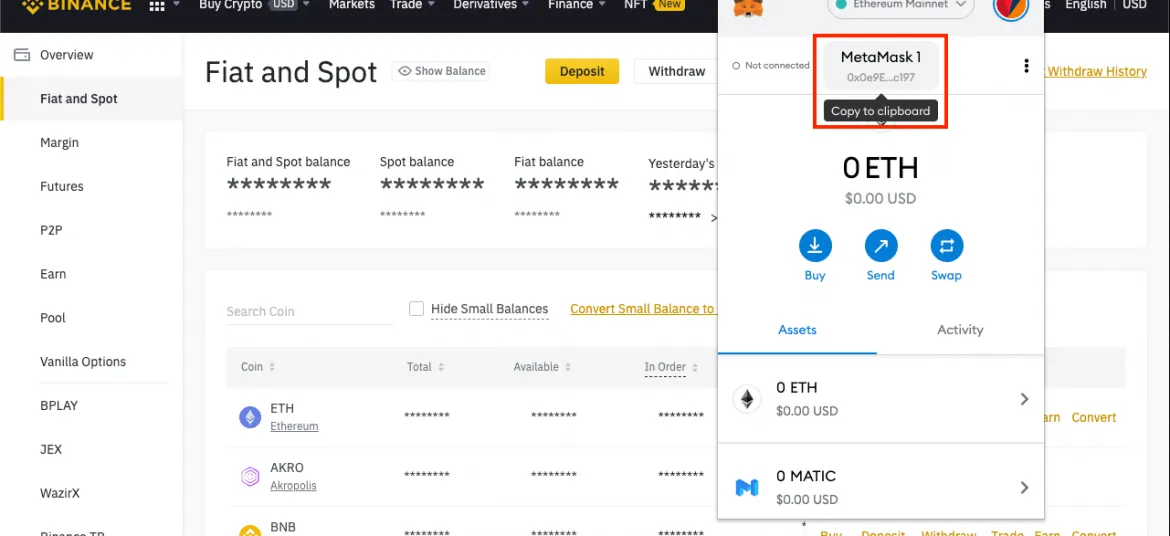
Paste Address In Binance
Switch over to your Binance Web page and paste the copied address and you’ll need to confirm the network that you selected earlier from your SafePal. For this case, it will be BEP20.
Make sure that you’ve adjusted the amount that you’ll like to withdraw. Submit the withdrawal request when you’re done.
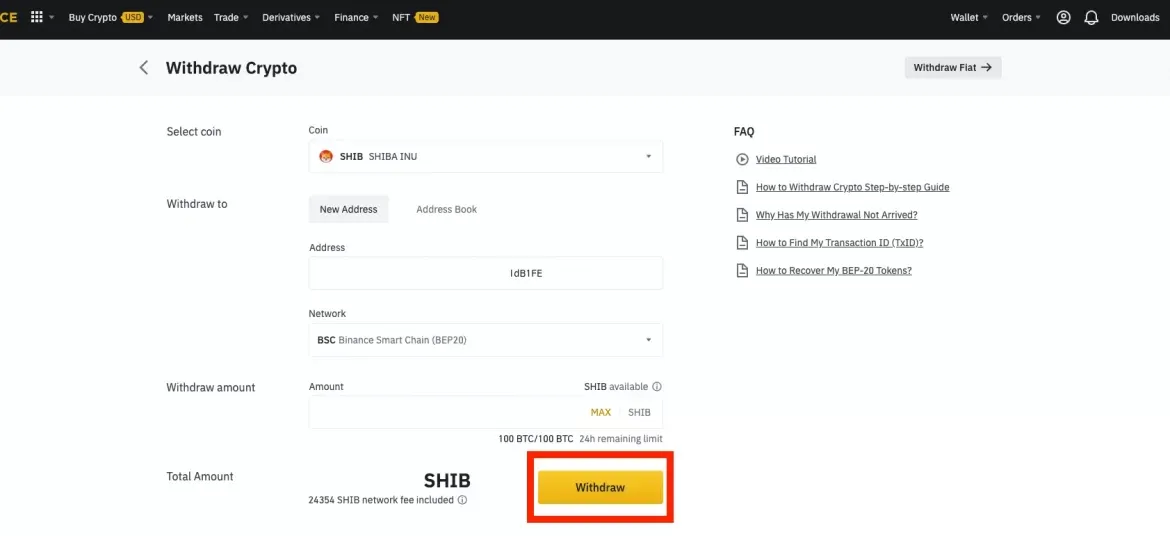
Check & Confirm Withdrawal
This section is important, remember to check your withdrawal information before continuing. You’ll not be able to make any changes pass this point.
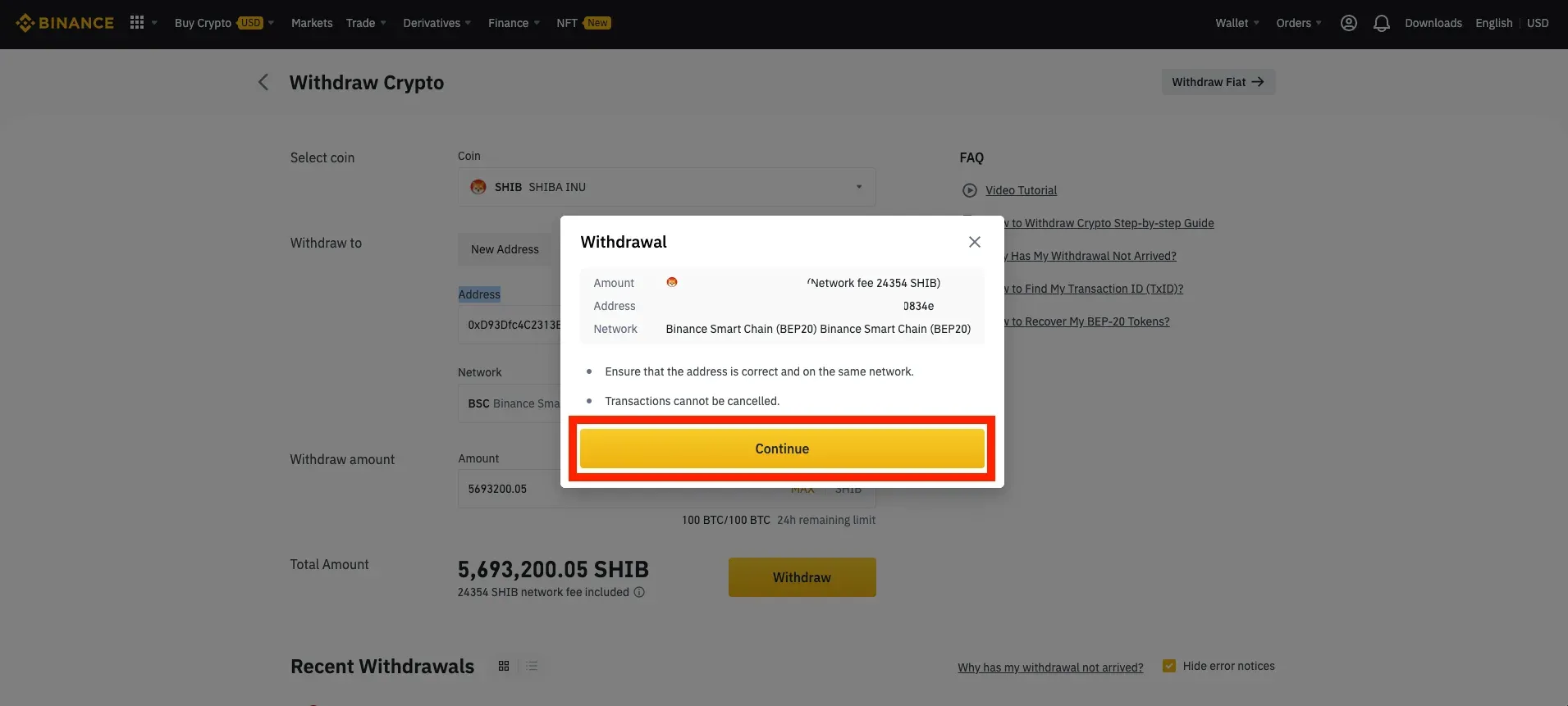
You’ll be asked to key in your security verification codes before you’re able to complete your transaction.
Wait For TaxID
After completing your security verification codes, the page would refresh. Scroll down to check your withdrawal history.
You should be able to see your withdrawal order with a status of pending. This meant that your transaction is processing.
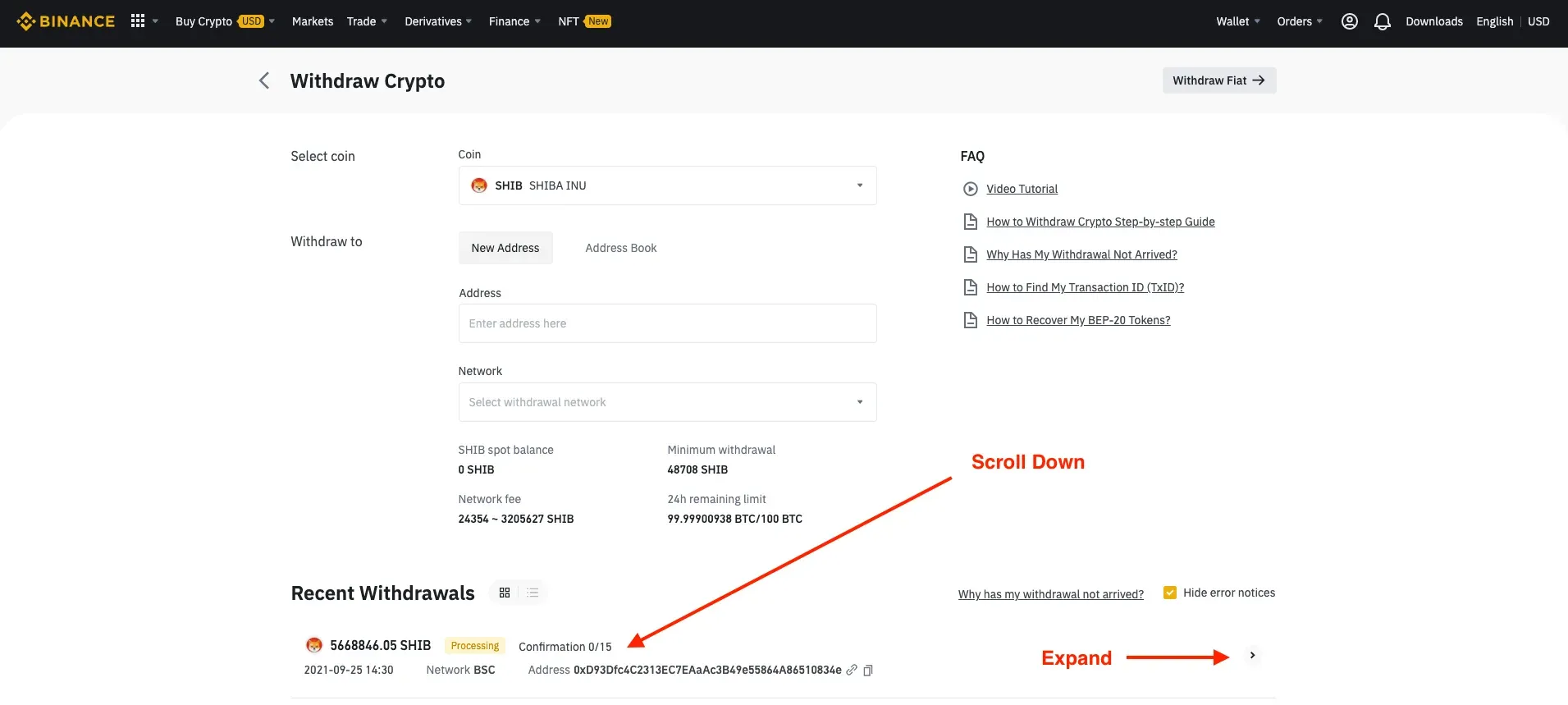
Use TaxID To Check For Progress
You might not be able to see the TaxId immediately, until then, you can refresh the page until you’re able to see TaxID as shown below.

Click on the chain icon, it will open up another page, BSC Scanner, that shows you the update of your withdrawal transaction.
You’ll expect the transaction it completes anytime from 5-10mins depending on the number of cryptocurrencies you’re transferring, and if the traffic is congested or not.
The process to withdraw from Binance to SafePal Wallet is quite simple isn’t it? You just needed to ensure that the correct network is selected on two sides, the receiving account and the sending account.
Hope this has been helpful.
*Disclaimer: We only recommend products we would use ourselves and all opinions expressed here are our own. This post may contain affiliate links, we may earn a small commission when you sign up to trade but at no additional cost to you. KaiElijah does not guarantee the reliability of the Site content and shall not be held liable for any errors, omissions, or inaccuracies. The opinions and views expressed in any article on this site are solely for informational purposes only, and it does not constitute an endorsement of the services discussed or investment, financial, or trading advice. Read the full affiliate disclaimer here.
